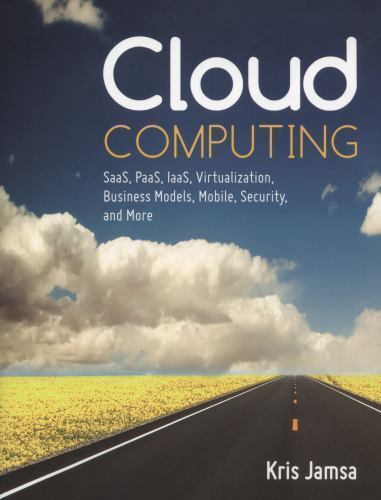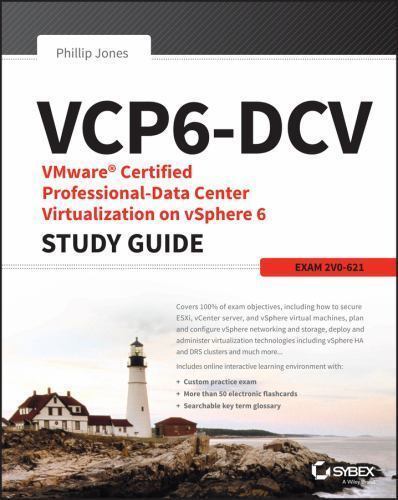Your cart is currently empty!
Tag: Virtualization

The Benefits of Virtualization in Data Center Storage Systems
In recent years, virtualization has become an increasingly popular technology in data center storage systems. This technology allows organizations to maximize their storage resources and improve scalability, flexibility, and efficiency. There are several benefits of virtualization in data center storage systems that make it a valuable investment for businesses of all sizes.One of the key benefits of virtualization in data center storage systems is improved efficiency. By consolidating multiple storage devices into a single virtual pool, organizations can reduce the amount of physical hardware needed and optimize storage utilization. This can lead to cost savings in terms of hardware acquisition, maintenance, and energy consumption.
Virtualization also allows for greater flexibility in data center storage systems. With virtualized storage, organizations can easily allocate and reallocate storage resources as needed, without the need for manual intervention. This ensures that storage capacity is always aligned with the organization’s changing needs, whether it be due to data growth, new applications, or shifting business priorities.
Another benefit of virtualization in data center storage systems is enhanced scalability. Virtualized storage systems can easily scale up or down to accommodate growing storage requirements, without the need for costly hardware upgrades or migrations. This scalability is particularly valuable for businesses experiencing rapid growth or fluctuating storage demands.
Virtualization also improves data protection and disaster recovery capabilities in data center storage systems. By virtualizing storage resources, organizations can create snapshots, clones, and backups more efficiently, ensuring that data is protected and easily recoverable in the event of a disaster or data loss.
Furthermore, virtualization in data center storage systems can improve performance and reduce latency. By virtualizing storage resources, organizations can implement technologies such as flash storage and caching to accelerate data access and processing. This can lead to faster application performance and improved user experience.
In conclusion, the benefits of virtualization in data center storage systems are numerous and significant. By improving efficiency, flexibility, scalability, data protection, and performance, virtualization can help organizations optimize their storage resources and achieve their business goals more effectively. As businesses continue to generate and store increasing amounts of data, virtualization will play an essential role in ensuring that storage systems can keep pace with evolving requirements.
How Virtualization is Changing the Landscape of Data Center Servers
Virtualization technology has revolutionized the way data centers operate, allowing for increased efficiency, flexibility, and cost savings. By enabling multiple virtual servers to run on a single physical server, virtualization has significantly changed the landscape of data center servers.One of the most significant ways virtualization is impacting data center servers is by maximizing hardware utilization. In the past, physical servers were often underutilized, with many running at only a fraction of their capacity. With virtualization, multiple virtual servers can run on a single physical server, allowing for much higher levels of utilization. This means that data centers can do more with less, reducing the need for additional hardware and saving on costs.
Virtualization also offers increased flexibility and scalability for data center servers. With virtualization, it is much easier to add or remove virtual servers as needed, allowing for rapid deployment of new applications or services. This flexibility is especially valuable in today’s fast-paced business environment, where organizations need to be able to quickly respond to changing market conditions.
Another key benefit of virtualization is improved disaster recovery and business continuity. By virtualizing servers, data centers can easily create backups of virtual machines and quickly restore them in the event of a hardware failure or other disaster. This ensures that critical systems and data are protected and can be quickly recovered, minimizing downtime and disruption to business operations.
Virtualization also helps to streamline management and maintenance of data center servers. With virtualization, administrators can easily monitor and manage multiple virtual servers from a single console, simplifying routine tasks such as software updates, patches, and backups. This centralized management approach helps to improve efficiency and reduce the risk of errors or downtime.
Overall, virtualization is changing the landscape of data center servers by providing increased efficiency, flexibility, scalability, and cost savings. As more organizations adopt virtualization technology, they are able to achieve greater levels of performance and agility in their data center operations. By leveraging virtualization, data centers can better meet the demands of modern business and stay competitive in today’s fast-paced digital world.

The Role of Data Center Capacity Planning in Cloud Migration and Virtualization Initiatives
Data center capacity planning plays a crucial role in the success of cloud migration and virtualization initiatives. As organizations increasingly rely on cloud services and virtualization technologies to enhance their IT infrastructure, the need for effective capacity planning becomes more important than ever.Capacity planning involves assessing the current and future needs of an organization’s IT infrastructure in order to ensure that sufficient resources are available to support business operations. In the context of cloud migration and virtualization initiatives, capacity planning is essential for optimizing resource utilization, ensuring performance and availability, and controlling costs.
One of the key benefits of capacity planning in the context of cloud migration and virtualization is the ability to right-size resources. By accurately assessing the workload requirements of applications and services, organizations can provision the right amount of compute, storage, and networking resources to meet their needs without overprovisioning and incurring unnecessary costs.
Capacity planning also helps organizations identify potential bottlenecks and performance issues that may arise during the migration or virtualization process. By analyzing workload patterns and resource utilization trends, IT teams can proactively address capacity constraints before they impact the performance of critical applications and services.
Additionally, capacity planning enables organizations to make informed decisions about resource allocation and optimization. By understanding the resource requirements of different workloads, IT teams can prioritize resource allocation based on business priorities and performance objectives, ensuring that critical applications receive the necessary resources to operate efficiently.
Furthermore, capacity planning plays a vital role in cost management and optimization. By accurately forecasting resource requirements and utilization patterns, organizations can avoid overprovisioning and reduce unnecessary expenditure on cloud services and virtual infrastructure. This allows organizations to maximize the return on their investment in cloud and virtualization technologies while maintaining cost-effectiveness.
In conclusion, data center capacity planning is a critical component of successful cloud migration and virtualization initiatives. By accurately assessing workload requirements, identifying potential bottlenecks, optimizing resource allocation, and managing costs effectively, organizations can ensure the success of their migration and virtualization projects while maximizing the performance and efficiency of their IT infrastructure.

The Role of Data Center Servers in Cloud Computing and Virtualization
Data center servers play a crucial role in the world of cloud computing and virtualization. These servers are the backbone of the infrastructure that enables businesses to store and access data, run applications, and deliver services over the internet.Cloud computing is a technology that allows businesses to access computing resources, such as storage and processing power, over the internet instead of relying on physical hardware. This is made possible by data center servers, which store and manage the data and applications that are accessed by users through the cloud.
Virtualization, on the other hand, is the process of creating a virtual version of a physical server, storage device, or network resource. This allows businesses to run multiple virtual servers on a single physical server, optimizing resources and increasing efficiency.
Data center servers are essential for both cloud computing and virtualization because they provide the computing power and storage capacity needed to support these technologies. Without servers, businesses would not be able to access the resources they need to run their applications and services in the cloud, or to create and manage virtual machines.
One of the key benefits of using data center servers for cloud computing and virtualization is scalability. Businesses can easily scale their resources up or down as needed, depending on demand. This flexibility allows them to save money by only paying for the resources they use, rather than investing in expensive hardware that may sit idle most of the time.
Another benefit of using data center servers for cloud computing and virtualization is improved security. Data center servers are typically housed in secure facilities with strict access controls and monitoring systems in place to protect against unauthorized access and data breaches. This provides businesses with peace of mind that their data is safe and secure.
In conclusion, data center servers play a vital role in cloud computing and virtualization by providing the computing power and storage capacity needed to support these technologies. Businesses that leverage data center servers can benefit from increased scalability, improved security, and cost savings. As technology continues to evolve, data center servers will continue to play a crucial role in enabling businesses to harness the power of the cloud and virtualization.

The Role of Network Virtualization in Modern Data Centers
In today’s rapidly evolving technology landscape, data centers play a crucial role in enabling businesses to store and manage their vast amounts of digital information. With the increasing demand for data storage and processing capabilities, data centers are constantly looking for ways to improve efficiency, scalability, and performance. One technology that has emerged as a game-changer in modern data centers is network virtualization.Network virtualization is the process of abstracting network resources and services from the underlying physical network, allowing for greater flexibility and agility in managing network infrastructure. This technology enables data center operators to create multiple virtual networks that operate independently of each other, providing enhanced security, scalability, and performance.
One of the key benefits of network virtualization in modern data centers is improved resource utilization. By decoupling network services from physical hardware, data center operators can dynamically allocate and reallocate network resources based on the needs of different applications and workloads. This flexibility not only optimizes resource utilization but also reduces operational costs by eliminating the need for manual configuration and provisioning of network devices.
Additionally, network virtualization enhances security in data centers by isolating traffic between different virtual networks. This isolation prevents unauthorized access to sensitive data and helps mitigate the risk of data breaches and cyber attacks. Network virtualization also enables the implementation of advanced security policies, such as micro-segmentation, which allows for the enforcement of security policies at the individual workload level.
Another key advantage of network virtualization in modern data centers is improved scalability. As businesses continue to grow and expand, data center operators need to quickly and easily scale their network infrastructure to accommodate increasing demands. Network virtualization allows for seamless scaling of network resources without the need for costly hardware upgrades, enabling data centers to support a growing number of users and applications.
Furthermore, network virtualization enhances performance in data centers by optimizing traffic flow and reducing network latency. By leveraging software-defined networking (SDN) technologies, data center operators can prioritize network traffic based on application requirements, ensuring that critical workloads receive the necessary bandwidth and resources to operate efficiently.
In conclusion, network virtualization plays a critical role in modern data centers by providing enhanced flexibility, security, scalability, and performance. As businesses continue to rely on data centers to support their digital operations, the adoption of network virtualization technologies will become increasingly important in ensuring the efficiency and reliability of data center infrastructure. By leveraging the benefits of network virtualization, data center operators can effectively meet the evolving demands of the digital economy and drive innovation in the way data is stored and managed.

The Role of Virtualization in Modern Data Center Network Infrastructure
Virtualization has become a key component in modern data center network infrastructure, revolutionizing the way organizations manage and deploy their IT resources. By abstracting hardware components and creating virtual instances of servers, storage, and networking devices, virtualization allows for increased flexibility, scalability, and efficiency in data center operations.One of the primary roles of virtualization in the data center network infrastructure is server virtualization. By running multiple virtual machines on a single physical server, organizations can maximize the use of their hardware resources and reduce the number of physical servers needed. This not only saves on space and power costs but also simplifies server management and provisioning.
Virtualization also plays a crucial role in network virtualization, allowing organizations to create virtual networks that are independent of physical network infrastructure. This enables more efficient use of network resources, improved network performance, and easier network management. With network virtualization, organizations can quickly provision and scale network resources to meet changing business needs without the need for costly and time-consuming hardware upgrades.
Storage virtualization is another key aspect of virtualization in the data center network infrastructure. By abstracting storage resources from physical storage devices and creating virtual storage pools, organizations can optimize storage utilization, improve data availability, and simplify storage management. Storage virtualization also enables features such as data deduplication, snapshots, and replication, enhancing data protection and disaster recovery capabilities.
In addition to server, network, and storage virtualization, organizations are also leveraging virtualization technologies such as virtual desktop infrastructure (VDI) and software-defined networking (SDN) to further enhance their data center network infrastructure. VDI allows organizations to centrally manage and deliver virtual desktops to end-users, improving security, flexibility, and user experience. SDN enables organizations to programmatically control network traffic and configurations, making networks more agile, scalable, and automated.
Overall, virtualization plays a critical role in modern data center network infrastructure by enabling organizations to optimize resource utilization, improve operational efficiency, and enhance flexibility and agility. As organizations continue to adopt virtualization technologies, they will be better equipped to meet the evolving demands of their businesses and achieve greater success in the digital age.

Understanding the Role of Virtualization in Data Center Server Management
In today’s digital age, data centers play a crucial role in storing and managing vast amounts of information for businesses and organizations. With the increasing demand for more efficient and flexible IT infrastructure, virtualization has emerged as a key technology in data center server management.Virtualization is the process of creating a virtual version of a physical resource, such as a server, storage device, or network. This technology allows multiple virtual machines (VMs) to run on a single physical server, maximizing the utilization of hardware resources and improving scalability and flexibility.
One of the key benefits of virtualization in data center server management is the ability to consolidate servers. By running multiple VMs on a single physical server, organizations can reduce the number of physical servers needed, leading to cost savings on hardware, power, and cooling. This not only helps to lower operational expenses but also simplifies server management and maintenance.
Virtualization also improves server efficiency by enabling dynamic resource allocation. With virtualization technology, IT administrators can allocate CPU, memory, and storage resources to VMs on-demand, based on workload requirements. This allows for better utilization of resources and ensures that critical applications receive the necessary resources to perform optimally.
Moreover, virtualization enhances data center server management by providing greater flexibility and agility. IT teams can easily create, deploy, and move VMs across physical servers, enabling quick provisioning of new applications or services. This flexibility is particularly beneficial in dynamic environments where workloads fluctuate frequently.
Another significant advantage of virtualization in data center server management is improved disaster recovery and business continuity. By encapsulating applications and data within VMs, organizations can easily back up and replicate VMs to ensure data protection and minimize downtime in the event of a disaster.
In addition, virtualization technology offers enhanced security features for data center server management. VM isolation and segmentation help to prevent security breaches and contain potential threats within a single VM, reducing the risk of spreading to other VMs or the underlying physical server.
Overall, virtualization plays a critical role in modern data center server management by improving efficiency, scalability, flexibility, and security. As organizations continue to embrace digital transformation and cloud computing, virtualization will remain a key technology in optimizing data center operations and meeting the evolving needs of businesses in the digital era.

Cloud Computing: Saas, Paas, Iaas, Virtualization, Business Models, Mobile,…

Cloud Computing: Saas, Paas, Iaas, Virtualization, Business Models, Mobile,…
Price : 5.88
Ends on : N/A
View on eBay
Cloud Computing: Saas, Paas, Iaas, Virtualization, Business Models, Mobile, and MoreIn today’s rapidly evolving digital landscape, cloud computing has become an essential tool for businesses looking to streamline their operations, improve scalability, and enhance productivity. From Software as a Service (SaaS) to Platform as a Service (PaaS) and Infrastructure as a Service (IaaS), there are a variety of cloud computing models that cater to different business needs.
Virtualization, a key component of cloud computing, allows companies to maximize their resources and efficiency by creating virtual versions of hardware, software, storage, and network resources. This technology enables businesses to reduce costs, improve flexibility, and enhance agility.
When it comes to cloud computing, choosing the right business model is crucial for success. Whether it’s a public, private, or hybrid cloud deployment, companies must consider factors such as security, compliance, and scalability when selecting a model that aligns with their goals and objectives.
With the increasing popularity of mobile devices, cloud computing has become even more essential for businesses looking to provide seamless access to their services and applications on the go. Mobile cloud computing enables users to access data and applications from any device, at any time, and from any location.
In conclusion, cloud computing offers a plethora of benefits for businesses looking to stay competitive in today’s fast-paced digital world. By embracing SaaS, PaaS, IaaS, virtualization, and mobile cloud computing, companies can enhance efficiency, improve scalability, and drive innovation in their operations.
#Cloud #Computing #Saas #Paas #Iaas #Virtualization #Business #Models #Mobile..
VMware Certified Professional Data Center Virtualization on vSphere 6.7 Study G

VMware Certified Professional Data Center Virtualization on vSphere 6.7 Study G
Price : 16.30
Ends on : N/A
View on eBay
uideAre you looking to become a VMware Certified Professional in Data Center Virtualization on vSphere 6.7? Look no further! In this study guide, we will cover everything you need to know to pass the VCP-DCV 2019 exam and earn your certification.
1. Understand the Exam Objectives: The VCP-DCV 2019 exam covers a wide range of topics, including vSphere architecture, installation and configuration, networking, storage, security, and more. Make sure you are familiar with all the exam objectives before you start studying.
2. Familiarize Yourself with vSphere 6.7: VMware vSphere 6.7 is the latest version of VMware’s virtualization platform. Make sure you are familiar with the new features and enhancements in vSphere 6.7, such as VM encryption, vCenter Server Appliance, and vSphere Client.
3. Study the Official VMware Documentation: VMware provides a wealth of documentation on vSphere 6.7, including technical papers, configuration guides, and best practice guides. Make sure you read through these documents to gain a deeper understanding of vSphere 6.7.
4. Take Practice Exams: Practice exams are a great way to test your knowledge and identify areas where you need to focus your study efforts. VMware offers practice exams for the VCP-DCV 2019 exam, as well as third-party practice exams from companies like MeasureUp and Pearson VUE.
5. Enroll in Training Courses: If you prefer a more structured approach to studying, consider enrolling in a training course from VMware or a VMware Authorized Training Center. These courses cover all the exam objectives and provide hands-on practice with vSphere 6.7.
By following this study guide, you will be well on your way to becoming a VMware Certified Professional in Data Center Virtualization on vSphere 6.7. Good luck with your exam preparation!
#VMware #Certified #Professional #Data #Center #Virtualization #vSphere #Study
How Virtualization is Transforming Data Center Server Management
In recent years, the rise of virtualization technology has completely transformed the way data center server management is carried out. Virtualization allows for the creation of virtual servers that operate independently of physical hardware, enabling companies to maximize the efficiency of their data center operations. This technology has revolutionized the way servers are deployed, managed, and maintained in data centers, offering a range of benefits that have made it an essential component of modern IT infrastructure.One of the key ways in which virtualization is transforming data center server management is by enabling companies to consolidate their server infrastructure. In the past, companies would need to deploy multiple physical servers to run different applications and services. This approach was not only costly in terms of hardware and maintenance, but it also led to inefficient use of resources, with many servers operating at low capacity. With virtualization, companies can run multiple virtual servers on a single physical server, enabling them to maximize resource utilization and reduce hardware costs.
Virtualization also simplifies server management by providing a centralized platform for monitoring and controlling virtual servers. Administrators can easily create, deploy, and manage virtual servers through a single interface, streamlining the process of server provisioning and maintenance. This centralized approach to server management allows for greater control and flexibility, enabling administrators to quickly scale resources up or down according to changing business needs.
Another key benefit of virtualization in data center server management is improved disaster recovery and business continuity. Virtual servers can be easily backed up and replicated, allowing companies to quickly recover from server failures or other disasters. This level of redundancy and resilience is essential for ensuring the continuous operation of critical business applications and services, minimizing downtime and ensuring business continuity.
Virtualization also enhances security in data center server management by isolating virtual servers from each other and from the underlying physical hardware. This isolation helps to prevent security breaches and unauthorized access to sensitive data, reducing the risk of cyberattacks and data breaches. Additionally, virtualization technology enables companies to implement advanced security features such as encryption, access controls, and network segmentation, further enhancing the security of their server infrastructure.
Overall, virtualization technology is revolutionizing data center server management by providing companies with greater flexibility, efficiency, and scalability. By consolidating server infrastructure, simplifying server management, improving disaster recovery and business continuity, and enhancing security, virtualization is helping companies to optimize their data center operations and achieve their business goals more effectively. As companies continue to embrace virtualization technology, the future of data center server management looks brighter than ever.
